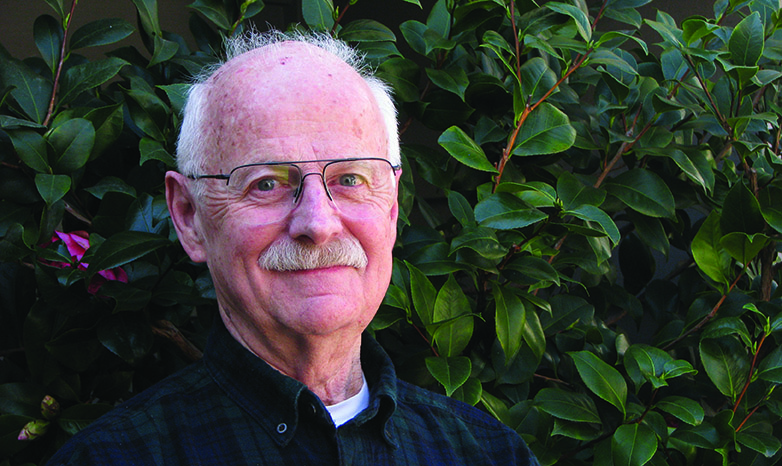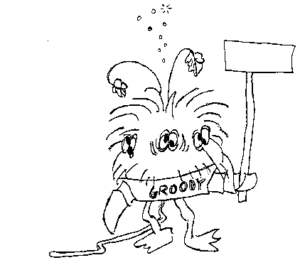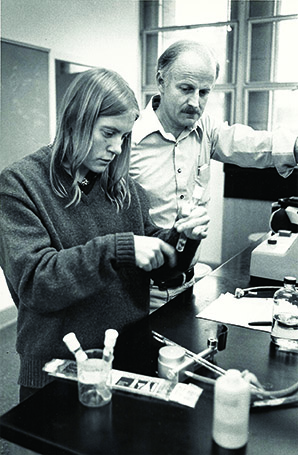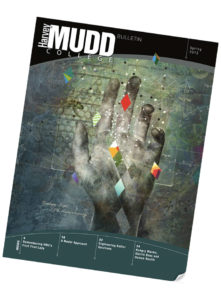In Memoriam: Biology Department Founder William K. Purves
May 28, 2020
The founding member and former chair of the Department of Biology at Harvey Mudd College William K. Purves, passed away April 22 in Costa Mesa with family at his side.
Purves was the Stuart Mudd Professor of Biology from 1977 to 1995. He served as chair of the department of computer science from 1985 to 1990 and of the department of biology from 1985 to 1995.
He elected early retirement in 1995 after teaching introductory biology for 34 consecutive years in order to concentrate entirely on research directed at learning and scientific education. The move grew from his association with Roger Schank, first in his Artificial Intelligence Group at Yale, then in his Institute for the Learning Sciences at Northwestern University, and in his activities at Carnegie-Mellon University, Engines for Education, Socratic Arts, and Grandview School. Purves participated in the development of Schank’s Virtual International Science and Technology Academy.
Purves was the senior author of the first seven editions of the college textbook Life: The Science of Biology. The eighth edition was coauthored with David Sadava, Craig Heller, Gordon Orians and David M. Hillis.
A fellow of the American Association for the Advancement of Science, Purves served as head of the Life Sciences Group at the University of Connecticut, Storrs, and as chair of the Department of Biological Sciences, University of California, Santa Barbara, where he won the Harold J. Plous Award for teaching excellence.
Purves was a co-founder and scientific director of The Mona Group LLC, which combined the diverse talents of its partners (pedagogy and scientific content, programming, art, animation and publishing) to design, develop, produce, manufacture and market interactive multimedia educational software products. He consulted on education and training for Motorola, Edvotek and other companies.
Purves attended the California Institute of Technology, obtaining a bachelor of science degree in 1956. He continued his studies at Yale University, completing a master of science in 1957 and a doctor of philosophy in 1959 under Arthur Galston. He was a postdoctoral fellow (1959–1960) with the National Science Foundation at the University of Tübingen, and was a postdoctoral fellow (1960–1961) with the National Cancer Institute at the University of California, Los Angeles. Purves served in a senior postdoctoral fellowship with the National Science Foundation at the University of London in 1967.
Purves is the 1994 recipient of a Harvey Mudd Honorary Alumni Award and the 1995 Henry T. Mudd Prize, which recognizes outstanding members of the HMC community.
Purves is survived by his wife, Jean, a son, David, and grandchild, James. The family requests that gifts in his honor be made to the William Purves Endowed Life Science Summer Research Fund at HMC or to Parkinson’s disease research.
_________________
On the occasion of the 35th anniversary of the Department of Biology, the College featured an interview with Bill Purves in the spring 2013 HMC Bulletin. Here’s the story.
In the Beginning, There Was Bill
35 Years Ago, Bill Purves launched the HMC Biology Department
When A.J. Shaka ’80 was thinking about applying to become a Rhodes Scholar, he turned to his then teacher and mentor for advice. Bill Purves, who had taught Shaka biology and mentored him during his senior-year research project, was ready to go to bat for his student.
“He was very important in encouraging me to apply for the Rhodes,” says Shaka, now a professor of chemistry at University of California, Irvine. “He wrote a letter for me that the Rhodes committee brought up during the interview. Whatever he said—I don’t know what it was—it seemed pretty important to the committee.”
Although Purves was instrumental in launching the biology program—becoming its founding member and helping raise funds for the program—he is perhaps best remembered as a man who loved to teach.

Purves introduced the Groody and used it to illustrate various biology concepts. Illustration by Dave Gonda ’79.
Purves’ favorite memories of his early years at Harvey Mudd center on his efforts to capture his students’ imagination and to illustrate concepts by novel stories. “How might I explain the direction in which an RNA molecule grows? Aha! I’ll make up a story about ‘Dimitrios the one-armed line dancer.’”
“Some of my students, after taking the course, sort of hung out with me and talked and talked,” Purves recalls. “They were all bright, these kids. They were Harvey Mudd students.”
The deeply felt responsibility of educating brilliant, young minds guided Purves throughout his career as a scientist and educator. He was in the right place when plans for a biology department took shape in the late 1980s.
A plant physiologist, Purves majored in biology at Caltech before earning a master’s degree and doctorate from Yale University. He taught biology, biochemistry and botany at the University of California, Santa Barbara, for 12 years, eventually becoming chair of the biology department, before taking over a group of biological sciences departments at the University of Connecticut in 1973. In 1977, he moved to HMC. When asked why the head of a group of departments at a big research university would leave for a position as the only biologist at a small engineering school, he replied that he was strongly attracted by the promise of teaching some of the best under-graduates in the world at a very fine college.
He busied himself researching plant growth hormones, teach-ing biology and eventually recruiting faculty for a new biology department. Purves’ fi rst new colleague, the neurobiologist T.J. Mueller, was hired in 1981. Mueller and Purves soldiered alone for most of the decade until the College decided to approve a biology department and major.
“I felt the College really needed somebody in molecular biology,” Purves says. “We hired Nancy Hamlett for that. And T.J. and I felt very strongly that we needed an evolutionary biologist/ecologist—and that was Catherine McFadden. And then I also felt a need to have somebody who you could call a cell biologist, and we hired Jim Manser. We rounded out the initial depart-ment when we hired Steve Adolph, a behavioral ecologist.”
Purves taught several biology classes himself. “He was very approachable,” Shaka says. “He had a very keen ability to sense whether or not you actually understood what it was he was teaching. He had a sixth sense about that.”

Bill Purves and Anne Marie Stomp, then a PhD candidate from the University of Connecticut, set up and taught the first HMC biology laboratory.
Purves had firm beliefs about how students learned and was very interested in writing a biology textbook that would support his strategy. He had known New England publisher Andy Sinauer since the early 1960s, first serving as a reviewer of developing textbooks. Sinauer encouraged Purves to tackle a book himself—an introductory biology course meant for both biology majors and nonmajors.
Working alone, Purves started on the book while at the University of Connecticut, but took the work with him to his new position at Harvey Mudd College.
“I was working at night and on campus all day and writing. One night I was in my office at Harvey Mudd and a student, Mike Ross ’86, comes through the door—this was about 1 a.m. I heard this, ‘Whoa! What a stud!’
“It was because I type really fast,” he says with a laugh. “That was how I lived in those times!”
He eventually collaborated with a second scientist-academic to produce the first two editions of the book. His last edition was the eighth, by which time he had three more coauthors.
Purves recommended that his students use his book in his introductory class, but he didn’t think it right to get royalties from them. He returned the amount of the royalty to all students who bought an unused copy of the current book.
Purves left HMC in 1995.
“I think I was 61 or 60 when I retired, and I had just come out of having cancer, which is long gone,” he says. “I’d loved working with the students there, and I couldn’t get enough of them, but I really needed to move on.”
He turned to his passion—how students learn—and helped start a company that created educational software on CD-ROMs. He also collaborated with Roger Schank, a long-time colleague, on ventures to replace current schooling with truly effective and stimulating courses.
The work “concerns what’s wrong with teaching and learning now, and what it should be,” Purves explains. “Accretion of knowledge is not the point. What people should really be learning is how to reason—and then using that skill.”
Written by Shari Roan

